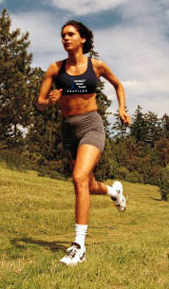Osteoporosis Facts
Osteoporosis is the leading cause of fractures resulting in billions of dollars being spent in the healthcare system. As a physical therapist, it is important to educate the public on information for reducing the risk of fracture, which is a frequent and possibly serious co-morbidity of osteoporosis. The public is subjected to multiple commercials advertising medications that can help fight osteoporosis. What they may not know, is that simple exercise alone can improve your bone density, decrease your risk of fractures and doesn’t come attached to a list of adverse side effects.
Facts:
- Osteoporosis is a bone disease that leads to decreased mineral content and bone density, resulting in a weakening of the bone
- The incidence of this disease has been shown to increase with older age
- Worldwide, 50% of women over the age of 60 will have an osteoporotic fracture, an incidence rate that is larger than the combined incident rates of heart attack, stroke, and breast cancer.
- One study from 1992 had a worldwide projection that osteoporotic fractures would affect one-third of all men during their lifetime by the year 2050.
- Primary risk factors for osteoporotic fractures include low bone mineral density, deterioration of bone, older age, Caucasian race, female sex, lower body weight and AN INACTIVE LIFESTYLE.
What can you do?
- Exercise can decrease the risk of an osteoporosis related fracture by 50%
- One study found that weight bearing exercise for 20 minutes a day can positively affect risk factors associated with osteoporotic fractures among elderly women. The exercises for the intervention group included: jumping, dancing, walking, strengthening, and balance exercises. The exercise group had increased leg strength as well as improvement in walking speed and endurance, as compared to the control group. In a long-term follow-up study, the same authors found that the above intervention decreased mortality in women with osteopenia (a precursor to Osteoporosis).
- A bi-weekly exercise routine developed by your PT can increase your bone density.
- Muscle contraction and mechanical loading deform bone and stimulate activity of osteoblasts, the cells which build bone. It is, therefore, not surprising that these interventions improve bone mineral density.
Want to learn more?
- National Osteoporosis Foundation fact sheet. http://www.nof.org/node/40
- International Osteoporosis Foundation fact sheet. www.dolcera.com/wiki/images/Osteoporosis_factsheet.pdf
- Browse this website: www.iofbonehealth.org

